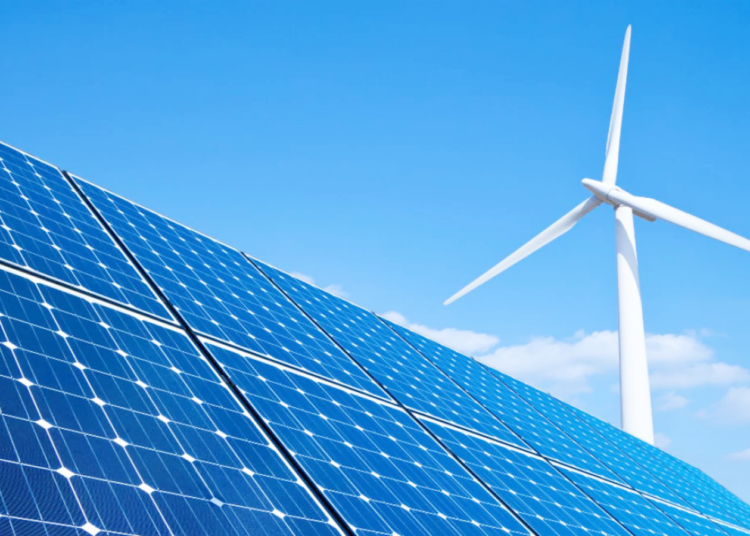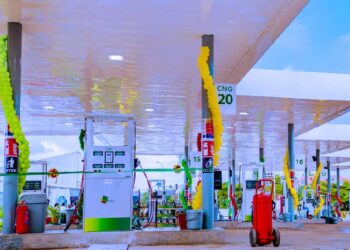The World Bank, has cautiously enjoined African nations and industries to execute a joint action to realise the full potential of solar power, which it identifies as key to bridging Africa’s energy gap.
The Bank, believes that solar mini grids can provide high-quality uninterrupted renewable electricity to underserved villages and communities across Sub-Saharan Africa and be the least-cost solution to close the energy access gap on the continent by 2030.
Climate action efforts can tap solar mini grids that offer a lower greenhouse gas emission alternative compared to diesel-fueled systems and kerosene-based appliances.
The World Bank’s Mini Grids for Half a Billion People: Market Outlook and Handbook for Decision Makers notes that to realize the full potential of solar mini grids, governments and industry must work together to systematically identify mini grid opportunities, drive costs down, and overcome barriers to financing.
In Nigeria, for example, a market-driven approach to mini grid development under the World Bank-supported National Electrification Project has catalyzed the deployment of more than 100 new solar-powered mini grids.
Already, the Federal Government is creating private sector investment opportunities in its Energy Transition Plan, which has identified initial $23 billion investment opportunity across a portfolio of projects.
Under the plan, $17 billion is estimated as funding required through the private sector, across generation, transmission, distribution, metering, gas commercialization, clean cooking, e-mobility, and healthcare.
The Energy Transition initiative is specifically designed to tackle the dual crises of energy poverty and climate change and reach net-zero status by 2060, while also providing energy for development, industrialization, and economic growth.
In an interactive session on opportunities and challenges in Nigeria’s Energy Transition Plan, in Lagos experts are of the opinion that to deliver net-zero target by 2060, Nigeria requires ~$410 billion above business-as-usual spending (between 2021 – 2060); $150 billion net spend on generation capacity, $135 billion on transmission and distribution infrastructure, $79 billion on cooking, $21 billion on industry, $12 billion on transport and $12 billion on oil and gas decarbonisation.
To help consolidate efforts towards energy transition, a private sector-focused roundtable was convened which discussed the role of the organized private sector in the country’s Energy Transition Plan, and how to chart a path forward.
Organised by the Energy Transition Office who are funded by Sustainable Energy for ALL (SEforALL) and Global Energy Alliance for People and Planet, the meeting brought together stakeholders from the private sector and government to discuss the challenges and opportunities available in Nigeria’s Energy Transition Plan.
With the help of private sector actors, the group will work to develop an implementation framework that will enable Nigeria achieve the financing objectives of the ETP.
Lanre Shasore, Senior Special Assistant, SSA to the President on Planning and Coordination, set the pace for the meeting by giving a brief history of the Energy Transition Plan.
This was followed by the welcome remarks from Dr. Muntaqa Umar-Sadiq, Head/Principal Finance Specialist at the Energy Transition Office. He highlighted that the ETP lays out a comprehensive roadmap for Nigeria’s energy transition, and emphasised the need for private sector engagement in the form of co-creation and alignment to raise the funds required to achieve the country’s net zero goal by 2060. This crucial role he believes, will help the government overcome bottlenecks and mobilize the necessary resources.
Various players from the energy, finance and legal sectors participated in the meeting, as well as other experts who shared their insights and experiences on the challenges and opportunities presented by the energy transition.
The interactive session on Investment Opportunities in the Nigerian Energy Transition Plan featured at the roundtable.
The session was moderated by Tariye Gbadegesin, CEO, ARM-Harith Infrastructure Fund. Tariye guided the participants in approaching the Energy Transition agenda from a bottom-up perspective, focusing on sectorial themes such as power, transport, gas transition, manufacturing, and transmission.
As part of the discourse, participants highlighted the need for innovative financing models and the role of public-private partnerships in recognising value chains across verticals. In line with this commitment, a private sector working group was formed to support energy transition in the country.
The group, which will leverage its expertise and network, will help mobilise funds and promote innovative financing models that can accelerate the adoption of renewable energy technologies.
After considerable deliberations and constructive dialogue, Somkele Awa-Kalu emphasized the ETO’s openness to collaboration, which was also echoed by Dr. Muntaqa Umar-Sadiq, Head of the ETO. Dr. Umar-Sadiq recommended that the Private Sector Working Group meet virtually on a monthly basis and hold physical meetings quarterly.
Speakers and attendees included Ahmad Salihijo, MD of Rural Electrification Agency, Chinua Azubike, CEO of Infracredit, Victor Adamu, TA to the President on Infrastructure, Hakeem Shagaya of Sun Africa, Nana Maidugu, Head of ESG at Nigerian Sovereign Investment Authority, Sola Carrena of Helios Investment, Tunde Gbajumo (Chief of Party, Power Africa), Banjo Alimi, Ayo Falola and Seyi Okunnuga of Sterling Bank, Dr. Uzo Egbuche of Climate Finance Accelerator, Muhammad Wakil of GEAPP, Joshua Adedeji of Innovate UK-KTN and Yemisi Awonuga, Partner at Templars Law, among other key stakeholders.
Throughout the meeting, these speakers highlighted the importance of collaboration between the public and private sectors, as well as the need to leverage innovative financing mechanisms to mobilize investment that will help drive energy transition in Nigeria.
“Kenya has deployed mini grids to serve communities that are not connected to the main grid,” said Mr Davis Chirchir, Cabinet Secretary Ministry. “Currently we have about 62 mini grids that are fully operational and 28, which are under construction. We hope to deploy more mini grids to close the energy access gap and ensure universal access to electricity by 2030.”
In Sub-Saharan Africa, 568 million people still lack access to electricity. Globally, nearly 8 out of 10 people without electricity live in Africa. At the current rate of progress, 595 million Africans will remain unconnected in 2030.
“While Africa remains the least electrified continent, it also has the biggest potential for solar mini grid deployment,” said Gabriela Elizondo Azuela, Manager of the World Bank’s Energy Sector Management Assistance Program (ESMAP).
“Solar mini grids can reach populations today that would otherwise wait years to be reached by the grid. They have the potential to transform the power sector in Sub-Saharan Africa. Through World Bank operations and advice to governments, ESMAP is helping take mini grids from a niche to a mainstream solution.”
The deployment of solar mini grids has markedly accelerated in Sub-Saharan Africa, from around 500 installed in 2010 to more than 3,000 installed today, and a further 9,000 planned for development over the next few years.
This is the result of falling costs of key components, the introduction of new digital solutions, a large and expanding cohort of highly capable mini grid developers and growing economies of scale.
In Africa, mini grids are on track to provide power at lower cost than many utilities. The cost of electricity produced by mini grids could be as low as $0.20/kWh by 2030, making it the least-cost solution for more than 60 per cent of the population.
Important progress has been made in several African countries to accelerate the deployment of mini grids.
In several countries such as Ethiopia and Zambia, new regulations and policy directives are making mini grids more attractive for private sector investment.
In Kenya, a combination of geospatial planning, favorable policies and regulations, and a robust business model based on public-private partnership is underpinning the World Bank-supported Kenya Off-Grid Solar Access Project, which is targeting almost 150 new mini grids in areas with low electricity access rates.
Further acceleration is needed, however, to meet Sustainable Development Goal 7 (SDG7). Powering 380 million people in Africa by 2030 will require the construction of more than 160,000 mini grids at a cumulative cost of $91 billion.
At the current pace, only around 12,000 new mini grids serving 46 million people will be built by 2030 at a total investment cost of approximately $9 billion.
The World Bank has committed more than $1.4 billion to mini grids over the next seven years, through 38 projects in 29 countries.
The investment plans of the World Bank’s portfolio include the deployment of 3,000 mini grids by 2029, with the expectation of bringing electricity to more than 13 million people.
This investment commitment is expected to crowd in more than $1 billion of co-financing from private sector, government, and development partners. In countries where the World Bank has an investment commitment in mini grids, the Bank’s investment represents on average about 25 per cent of the total investment in mini grids in each country from governments, the private sector, and development partners.
Produced by the World Bank’s Energy Sector Management Assistance Program (ESMAP), the book, the Mini Grids for Half a Billion People: Market Outlook and Handbook for Decision Makers, identifies five market drivers that would help the mini grid sector achieve its full market and development potential.
This include reducing the cost of electricity from solar hybrid mini grids to $0.20/kWh by 2030, which would put life-changing power in the hands of half a billion people for just $10 per month, and increasing the pace of deployment to 2,000 mini grids per country per year, by building portfolios of modern mini grids instead of one-off projects.
It also, considers providing reliable electricity service to customers and communities would generate the demand for 3 million income-generating appliances and machines and expand services at 200,000 schools and clinics, leveraging development partner funding and government investment to “crowd in” private-sector finance, potentially raising $127 billion in cumulative investment from all sources for mini grids by 2030, and establishing enabling mini grid business environments in key access-deficit countries through light-handed and adaptive regulations, supportive policies, and reductions in bureaucratic red tape.
The handbook is the World Bank’s most comprehensive and authoritative publication on mini grids to date.















